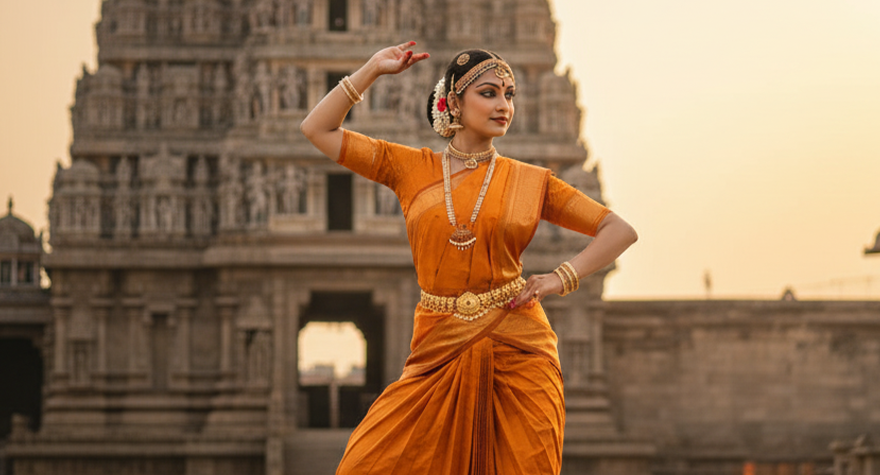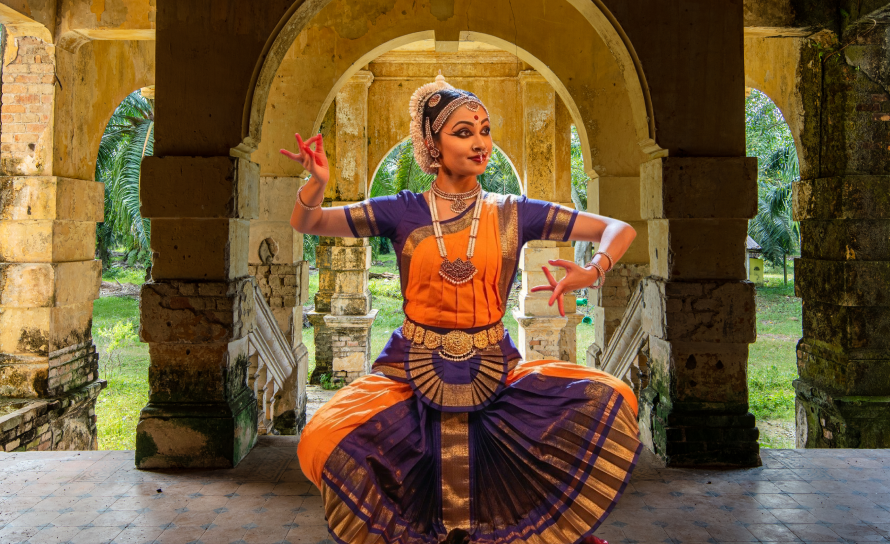The Historical Origins of Kuchipudi
Before taking the stage, it’s important to fully understand your performance requirements. Be aware of the duration, style of composition, and the type of audience you’ll be performing for. Study the storyline, lyrics, and abhinaya (expressions) carefully. Having a clear grasp at this stage helps make your rehearsals more focused and ensures your performance resonates effectively with the audience.
Origins in Andhra Village
Kuchipudi takes its name from the village of the same name in Andhra Pradesh, where it originated as a devotional offering to the deities. In its early phase, it was closely linked to temple worship and religious festivals.
Influence of Religion and Natya Shastra
Kuchipudi owes much of its formal structure to the visionary saint Siddhendra Yogi. He trained groups of young male dancers to perform dramatic dance compositions, establishing Kuchipudi as a classical art that blends narrative, rhythm, and spiritual devotion.
Role of Siddhendra Yogi – The Founder
Kuchipudi owes much of its formal structure to the visionary saint Siddhendra Yogi. He trained groups of young male dancers to perform dramatic dance compositions, establishing Kuchipudi as a classical art that blends narrative, rhythm, and spiritual devotion
Kuchipudi in the 17th Century
By the 17th century, Kuchipudi had evolved from a village ritual into a refined classical art form under royal patronage. Supported by kings and scholars, it flourished as a symbol of Andhra Pradesh’s rich cultural heritage.
The Evolution and Modern Interpretations of Kuchipudi

From Male-Only to Multigendered Performance
Originally performed only by men, Kuchipudi later embraced women performers who now not only dance but also choreograph innovative works for global audiences.
Development on Stage and Costume
Costume design has also evolved over time. While the traditional silk attire remains iconic, contemporary productions often adapt stage-friendly variations to enhance visual appeal and accessibility for modern audiences.
Fusion and Modern Choreography
Modern Kuchipudi often blends with contemporary and global dance styles. Today’s choreographers experiment with Western music and stagecraft while maintaining a delicate balance between tradition and innovation.
Globalization of Kuchipudi
From temple courtyards to international stages, Kuchipudi has journeyed across the world. Global festivals, online platforms, and international workshops have helped this art form reach new admirers across generations.
Conclusion
The history of Kuchipudi is a demonstration of the strength of Indian culture. From spiritual mentorship by Siddhendra Yogi to global stages, the dance has traversed a delicate balance of tradition and contemporary times. And as long as artists continue to experiment but not at the expense of its roots, Kuchipudi will remain timeless.
We of Nrityangana, feel that not only is each form of dance replete with rhythm, but also history, emotion, and identity. Kuchipudi is no performance, it’s a living epic, whose second half is being penned by artists such as yourselves.
FAQ's
When was the dance form of Kuchipudi established?
Kuchipudi was established in a small village in Andhra Pradesh in the 17th century, though spiritually it goes a long, long distance.
Who is the creator of dance Kuchipudi?
Siddhendra Yogi, and he imparted a clear character and style of presentation to Kuchipudi.
How is Kuchipudi different from Bharatanatyam?
Although both Indian classical dances, Kuchipudi is dance-drama and narrates prejudice based on tales and also includes dialogues and dramatizations.


